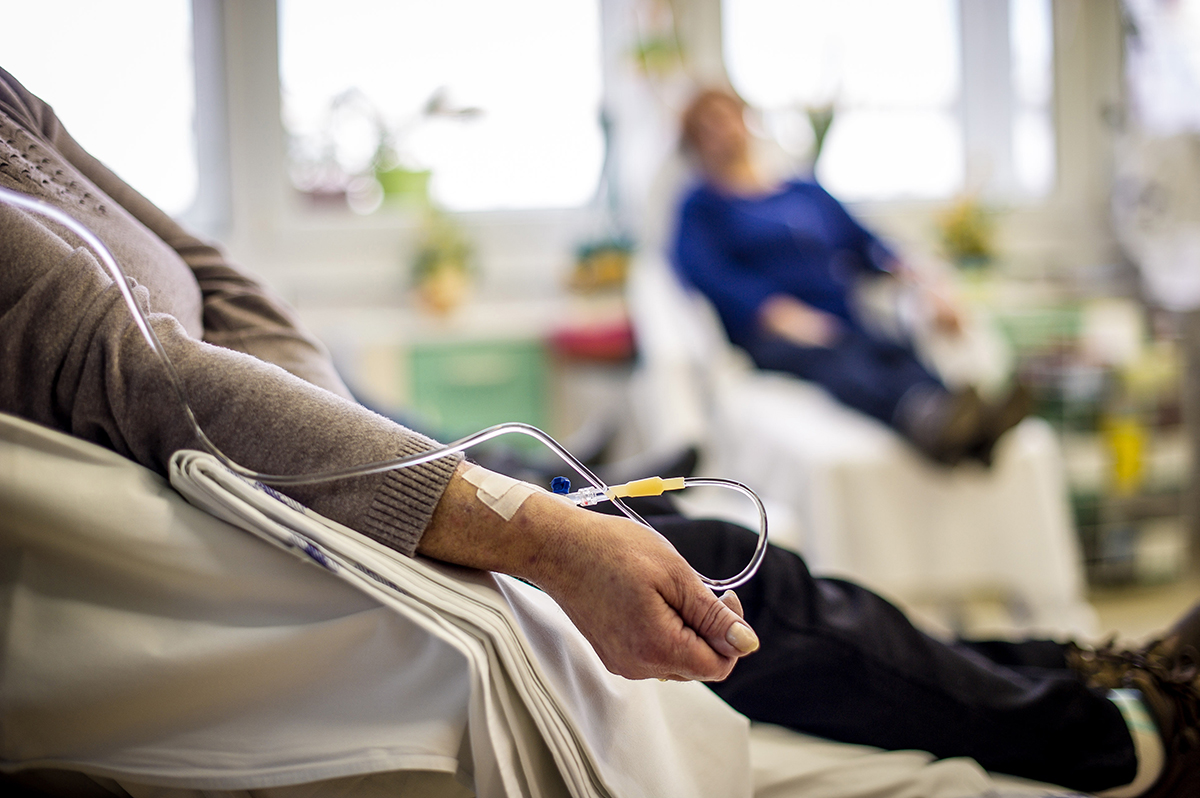
What do the stages of cancer tell you?
When diagnosed with cancer, one of the first things a person asks is: How bad is it?
By this, the person wants to know the prognosis. To understand the prognosis, they need to know the stage of cancer at diagnosis.
What cancer stages mean
The different stages of cancer indicate how much cancer is present if the abnormal cells have spread and where they have spread — one of the most important things to know when deciding on treatment options.
“Clinical staging is important because it tells us the location of primary cancer and if there are other areas involved,” said Ismael Shaukat, MD, a medical oncologist for OSF HealthCare. “It’s important for the overall prognosis, how we plan to treat the patient and whether we treat or observe the patient.”
How stages of cancer are determined
There will be additional exams and tests to determine the type of cancer and if it has spread. These exams and tests are critical for identifying cancer cells and developing the proper treatment plan. The universal language for identifying cancer is to use “stages.”
For some types of cancers, doctors may use the TNM staging system, the most widely used cancer staging system by the American Joint Committee on Cancer.
- “T” refers to the size and extent of the primary tumor.
- “N” refers to the number of nearby lymph nodes with cancer.
Numerical values of 1 to 4 are given, with the highest indicating how large the tumor is or how much lymph node involvement exists.
- “M” refers to whether cancer has metastasized or spread from the primary tumor to other parts of the body. Values of X, 0 or 1 are associated with the “M,” with X meaning no measurable metastasis, 0 means cancer has not spread to other parts of the body, and 1 represents cancer has spread.
“The stage helps tell us the prognosis or the curability,” Dr. Shaukat said. “The higher the number, the more advanced the cancer.”
How the stages of cancer are classified
“Staging helps patients by allowing them to understand their prognosis and what to expect in terms of treatment,” Dr. Shaukat said. “If the cancer is defined in an early stage, the likelihood of long-term survival is higher.”
While the TNM system describes cancer in great detail using letters and numbers, many cancers are grouped into five less-detailed yet more familiar stages. These can be described as stage 0, 1, 2, 3 or 4.
After a cancer diagnosis, you need answers.
- Stage 0 describes cancer in situ or “in place.” This is an early stage. These cancers are still located where they started and have not spread to nearby tissues. Often highly curable, usually using surgery to remove the tumor.
- Stage 1 is often called early-stage and indicates the tumor has not grown deeply into nearby tissues or spread to the lymph nodes or other parts of the body.
- Stage 2 and 3 generally indicate the presence of more significant cancers or tumors, which have grown more deeply into nearby tissue and may have also spread to lymph nodes but not to other parts of the body.
- Stage 4 is also called advanced or metastatic cancer, as cancer has spread to other organs or parts of the body.
“A lot of patients come in with some knowledge of the different stages of cancer,” Dr. Shaukat said. “For the most part, when they’re told it’s a Stage 4, in my experience, there’s a universal reaction: They know what Stage 4 is.”
A change in cancer stage
For the most part, he said, the stage of a cancer doesn’t change. The exception, however, is when cancer has been diagnosed as an early stage, like Stage 1, and years later, there is a cancer recurrence.
“Another way the stage of a cancer can change is by down staging,” Dr. Shaukat said. “For example, in breast cancer, a patient may undergo chemotherapy to make the tumor more operable.”
Four things to know about cancer staging:
- Cancer stage helps determine the type of treatment, such as guidelines and timelines.
- It helps predict the chance of recovery. While each cancer experience is unique, generalizations can be made for cancer types and stages.
- The stage sets the expectations and starts discussions about the challenges ahead.
- Your cancer stage can help determine if you’d be a fit for a clinical trial.
“Cancer staging,” Dr. Shaukat said, “is used to help patients get the appropriate care they need and to be informed, active participants in their cancer care.”